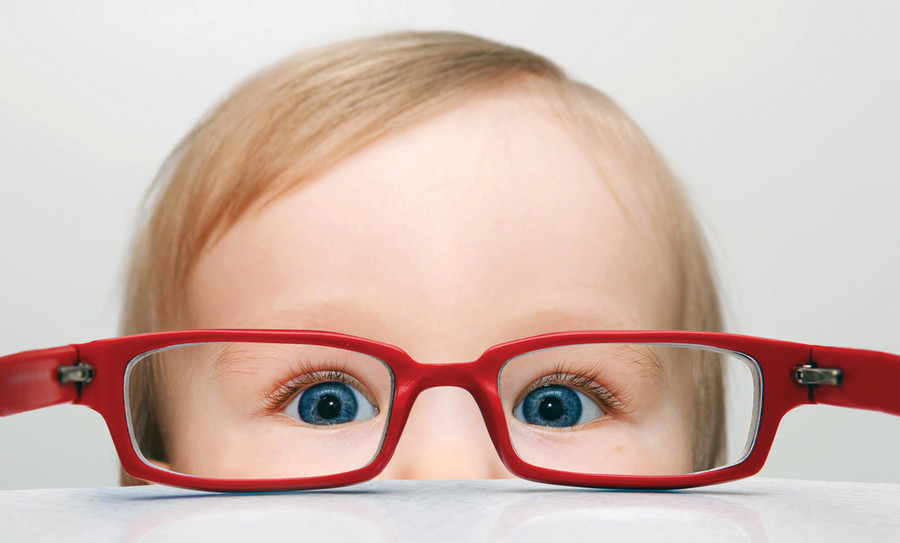Child Vision Problems are a major concern for today’s parents. There are many reasons that cause a lot of problems. In a world where 80 percent of learning is through visuals. Studies have proved that almost 60 percent of children having difficulties in learning are suffering from undetected vision problems. This leaves these children shorthanded in their learning phase along with hindering their social development. The question is that what can parents do to ensure that this does not happen to their children? Luckily, there is a lot of help and resources to guide the parents.
Reason Why So Many Child Vision Problems Are Undiagnosed?
The main reason why childhood eye problems are often left undiagnosed in the early stages is that children are unable to report about them themselves. Adults often confuse this issue with a learning disability in the child, when the child is in fact struggling with the visual task at hand.
They fail to realize that the problem is originally with the child’s eyes.
Sometimes, all they know is that their child is having a harder time in learning compared to their classmates, which can be upsetting and pressuring for the children, especially if they are being scolded for failing to do their tasks or compete at school.
Commonly Known Child Vision Problems
One more reason why child vision problems go unnoticed is that many children do not get their comprehensive eye exams. Their visual acuity may be tested by the school nurse using the big E chart, but that itself is not enough. Although this is an important test, there’s still a lot that isn’t being tested, e.g:
Convergence Insufficiency
This is a binocular vision issue in which, when looking at up-close things, the eyes tend to drift outward. This subsequently makes tasks like reading difficult for the child.
Astigmatism
A vision screening might miss this because the effect can be very subtle, although there is a refractive error causing a blurry vision. This can eventually cause amblyopia if not treated in time using corrective lenses.
Strabismus
This is misalignment of the eyes where they turn up, down, in or out. This also if left untreated can cause amblyopia, however, there are a lot of available treatments, e.g. using specially designed glasses, correcting by patching or sometimes even going for surgery.
“Lazy eye” or Amblyopia
This is reduced vision in one eye, normally caused by crossed eyes, difference in each eye’s refractive error or astigmatism. If not treated, amblyopia can cause permanent vision loss.
What Warning Signs Should Parents Watch For?
There are many symptoms of an eye problem which can be easily observed. They include frequent squinting or an eye turning in or out or, however, other symptoms may need much more careful observation. It is of course never a bad idea to bring the child in for a comprehensive eye exam. After all, problems that are identified at the early stage have a better chance of successful treatment. Eye tests by the child’s doctor can be the key to identifying child vision problems.
The warning signs of a vision problem in children (as per their age):
Babies Up To 1 Year Of Age With Child Vision Problems
Children Older Than 3 Months With Child Vision Problems
This age kid should be able to follow or track an object, like a ball or toy, with their eyes as it moves along their field of vision. If the baby cannot make steady eye contact by this time or seems unable to properly see, the child’s doctor should be immediately notified.
Before 4 Months
Mostly the eyes of babies’ look misaligned (strabismus) at occasions. However, after crossing 4 months in age, if outward drifting or inward crossing is still occurring regularly, it cannot be considered normal. The child’s doctor should be immediately notified if any of this is present.
Preschool Age Child Vision Problems
There are no warning signs for a vision problem such as amblyopia (lazy eye), and your child may not even report any issues with vision at all. That is what makes it important at this stage to have your child’s vision tested. There are special tests designed to test the child’s vision even if they are unable to read yet.
Identifying Kids With Child Vision Problems
If you feel that your child is displaying any of the following symptoms or signs, you should immediately consult their doctor. They can be:
- Misaligned eyes (looking turned out, crossed or not focusing together)
- Grayish white or White color in the pupil
- Quick fluttering in the eyes from up to down or from side to side.
- Itchiness, eye pain or any sort of discomfort reported by your child.
- Redness in any of the two eyes that haven’t gone away even after a few days
- Crust or Pus in either of the two eyes
- Watery eyes for a prolonged period
- Drooping eyelids
- Eyes appearing overly sensitive to light more often than not
- Blinks rapidly or frequently rub their eyes
- The attention span of the child is very short
- A child struggles with any up-close activity, especially reading.
- The child is getting frequent headaches
- The child often covers one eye unconsciously
- Children tilt their head to one side
- When children hold their reading materials very close to their eyes
- When they often lose their place during reading
- If children start facing difficulty in remembering what they read recently
Never Delay In Scheduling The Eye Exam Of Your Child
Being parents, we definitely want to give our children the absolute best. This also entails that if they are going through a vision disorder, it should be identified, diagnosed and treatment should be started as soon as possible. This is to ensure that they do not have to struggle against it as they learn and grow.
